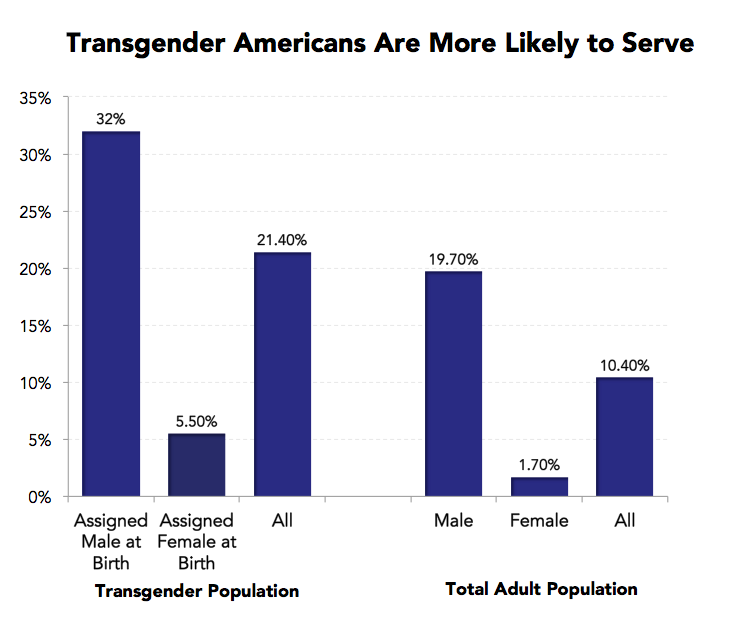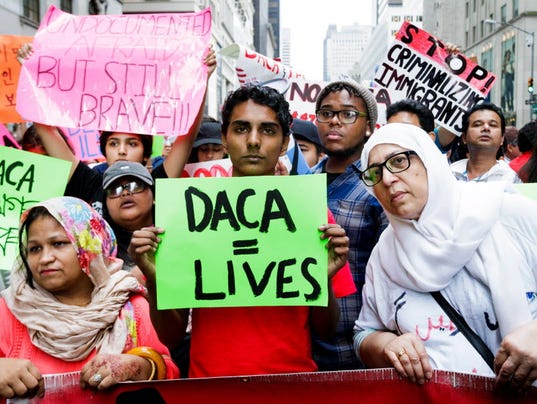Imagine a perfect world, where everyone was not only equal but treated to the same extent and respect. Why should you be able to pink slip people for no reason other than for who they are? President Trump has just put a damper on moving in the right direction by banning transgenders from serving in the military. It has always been a constant fight for the minorities but it is unsettling that we can move so far back when the country has improved significantly. The LGBT communities are the traditional targets and have the most attention drawn to them. Although Trump’s ban was trying to ‘help’ the military, the reasons behind it were unjustified because of the problem with military readiness, costs for their health care, respect and trust with fellow marines.
The LGBT community put in vigorous efforts to obtain transgender rights to serve in the military, but with only three tweets from President Trump all of their hard work was shattered before them. On July 26th, Trump established a ban stating that, “(...)the United States Government will not accept or allow Transgender individuals to serve in any capacity in the U.S. Military. (...)Our military must be focused on decisive and overwhelming victory and cannot be burdened with the tremendous medical costs and disruption that transgender in the military would entail.” Even the wording of the tweets would send chills down one's spine by saying they will not be “accepted or allowed”, and that the government cannot be “burdened.” This statement got answered by an overwhelming tsunami of support. People were fighting Trump on the tweets, every news channel and talk show were talking about it, even the troops were outraged. The reasons stated by Trump for this ban are myths. Trump’s main points were “military readiness, lethality, and unit cohesion.” The problem surrounding military readiness should not even be considered an example for this ban. There are over 15,000 transgender people serving in the military today and only 0.4% of Americans serve in the military. So removing such a large amount of special trained, ready to serve and committed people, does nothing but increase preparedness, quite the opposite of Trumps reason.
This statement got answered by an overwhelming tsunami of support. People were fighting Trump on the tweets, every news channel and talk show were talking about it, even the troops were outraged. The reasons stated by Trump for this ban are myths. Trump’s main points were “military readiness, lethality, and unit cohesion.” The problem surrounding military readiness should not even be considered an example for this ban. There are over 15,000 transgender people serving in the military today and only 0.4% of Americans serve in the military. So removing such a large amount of special trained, ready to serve and committed people, does nothing but increase preparedness, quite the opposite of Trumps reason.

Healthcare was also an important reason behind the ban against transgenders serving in the US armed forces. Trump claims that health care costs will increase immensely if transgenders continue to serve openly, and provides no facts to prove whether it is true. Studies have shown that transition related healthcare would cost the Defense Department only 0.005-0.017% of the healthcare budget. Which as you can tell is a very low percentage, so Trump tried to map the easiest route against transgenders and use it to his advantage, which was the costs of medication. Singling out trans troops is wrong especially if it is irrational like Trump’s examples. It costs more for viagra than transition related healthcare in the armed forces. Transgender people are in fact deployable, their hormone medications are available down range and are easily accessible because other troops take the same medicine for different reasons. Healthcare for transgenders is not a major issue. They are being singled out for their ‘complex’ medications which is unfair and wrong. Transgenders simply want to transition to the gender that fits them and will continue to serve with honor no matter the situation or cost.
The last big point that President Trump covered was with the unit cohesion. Unit cohesion is the bond of soldiers and their will and commitment to each other and the task at hand. Studies have shown, and by actual experience, that soldiers, marines, airmen, etc. are not only serving with their units but they are doing the job sufficiently. This proves the troops have no problem working together as a tight unit with others. Just because some members serving are transgender should not and does not affect the people or how the different units function. They also become lifelong friends and will stand side by side fighting for our country. The troops were outraged by the ban against their fellow service members stating “You deserve to be here. If you go, I go.” That statement alone proves yet again that Trump is wrongfully reasoning for this ban. Commanders pulled the troops together, ensuring that they would have each other’s backs and would not give in to these bigoted ways. The US needs to keep the talented service members and not have them discharged based on their gender identity. The families deserve so much better; they are our friends, service members, co-workers and much more. They still want to serve in a country that turned it’s back to them which takes a lot. We should be proud of their service not tear them down.
President Trump’s ban was truly a step in the wrong direction for transgenders worldwide. It is understandable that Trump was trying to better the military but ultimately his reasons were prejudiced and not honorable. The problems transgenders cause with military readiness, lethality and unit cohesion, all three can be solidly supported to be false. A strategic solution that will benefit the US armed forces greatly is to repeal the ban altogether. At times of bigotry like this we need to band together and have each others backs no matter what. We as Americans need to do all that we can to stomp out the hate.
"Transgender Military Ban: Fact-Checking Trump's Claims | Time.com." 27 Jul. 2017, http://time.com/4877230/trump-transgender-military-ban-myths/. Accessed 20 Oct. 2017.
"Trump's Spiteful Transgender Ban is Bad for Military Readiness." 4 Aug. 2017, http://www.newsweek.com/trumps-spiteful-transgender-ban-bad-military-readiness-646376. Accessed 20 Oct. 2017.
"Mattis Puts Hold On Transgender Ban For Current Military ... - NPR." 30 Aug. 2017, http://www.npr.org/sections/thetwo-way/2017/08/30/547258742/mattis-puts-hold-on-transgender-ban-for-current-military-service-members. Accessed 20 Oct. 2017.
"How the Military Became the Country's Largest ... - Priceonomics." 28 Sep. 2016, https://priceonomics.com/how-the-military-became-the-countrys-largest/. Accessed 20 Oct. 2017.
"58% of Americans support the right of trans troops to serve ... - PinkNews." 28 Jul. 2017, http://www.pinknews.co.uk/2017/07/28/58-of-americans-support-the-right-of-trans-troops-to-serve-in-the-military-openly/. Accessed 20 Oct. 2017.
"Response to Transgender Military Ban - St. Peter's Church." 27 Jul. 2017, http://www.stpetersphila.org/blog/2017/07/response-transgender-military-ban/. Accessed 20 Oct. 2017.





